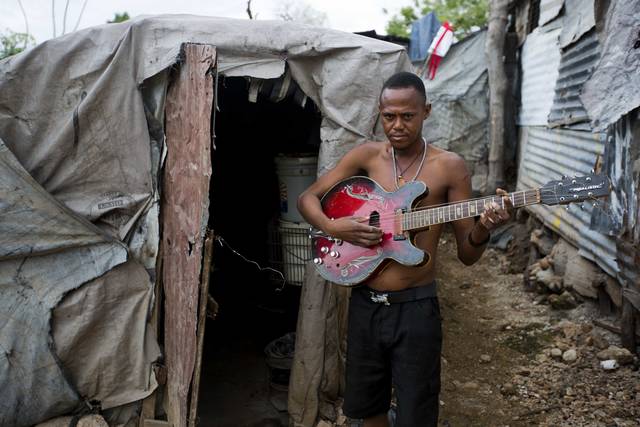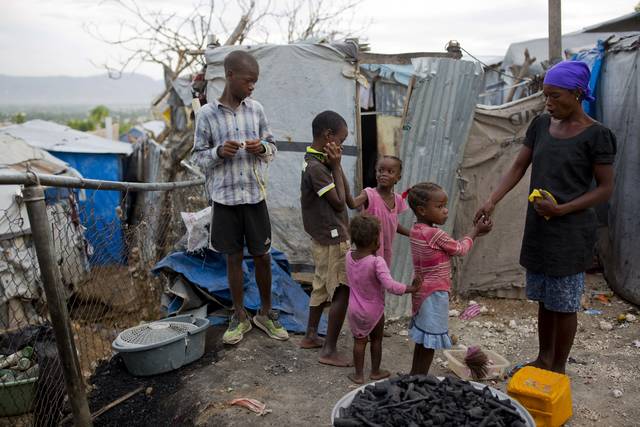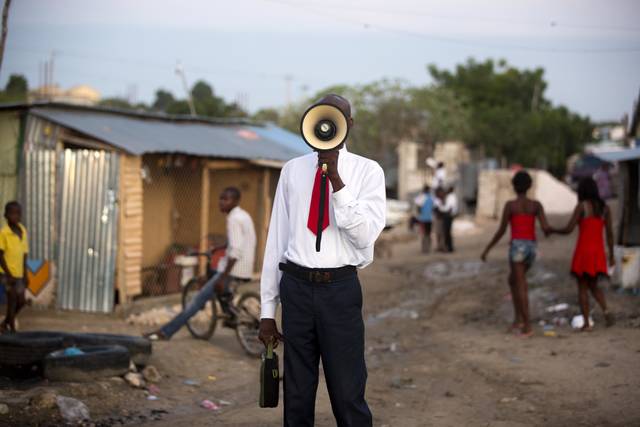PORT-AU-PRINCE, Haiti — Eight years ago, a magnitude 7.0 earthquake upended life in Haiti, killing more than 300,000 people by some estimates and destroying hundreds of thousands of homes. For many of those left homeless, life hasn’t yet returned to normal.
In the Delmas district in the north of the capital, Port-au-Prince, Camp Caradeux sprang up as a temporary home for 20,000 displaced people. Promises of new permanent homes have failed to materialize and Haiti’s economy remains weak, leaving camp residents with nowhere to go. As a result, the camp is transforming into a village as people build cinderblock homes and try to create more normal lives.
Associated Press photographer Chery Dieu-Nalio visited Caradeux on the approach of the quake anniversary to document the life of its residents, who are selling charcoal, cutting hair and pursuing other jobs so they can slowly accumulate the money to build houses.
For many, the anniversary of the quake was made more painful by President Donald Trump’s reported remarks questioning why the U.S. would accept more people from Haiti and “shithole countries” in Africa rather than places like Norway. Trump denied using that language.
“If I were the government officials, I’d shut down the U.S. embassy because Trump doesn’t respect my nation,” said Voodoo priest Brinor Monajean.
The camp includes about 3,000 temporary shelters and tents and about 50 concrete houses, with 100 more under construction. There is a school, police station, church and Voodoo temple, and the camp is supplied with electricity and potable water.
Mona Leger came to Caradeux after the quake pregnant with her second child, accompanied by her husband and their 4-year-old son. She is 39 now and has six children. Her husband sells chickens and she sells charcoal. Together, they earn about $150 a month and they dream of one day affording a home built of cinderblocks, which can cost about $7,000.
“I may have more children, only God knows. My husband and I are fighting to build our home one day,” she says.
The United States granted Temporary Protected Status to Haitian immigrants after the disaster, a status the Trump administration is revoking after deciding that conditions in Haiti had improved enough to merit removal of the special protection.
If and when they return to their homeland, Haitian immigrants will see conditions far different from the first years after the quake, but nowhere close to normal.
Phaiton Mackenson, a government port inspector, lives in a temporary shelter surrounded by the beginnings of a concrete home that he is slowly constructing. His apartment was destroyed when the quake struck just before 5 p.m. on Jan. 12, 2010.
“I am surrounding the shelter with cinderblock walls,” he says. “I stopped due to financial problems, but as soon as I have money from my work I will continue to build it because I want to get back to normal life.”
He says he wants an indoor toilet, electricity and a bedroom like he had in the lost apartment.
Etienne Acine, a 38-year-old television and radio repairman with six children, says he has been living in the camp for eight years and the wooden walls of his makeshift home are rotting.
“Living in the shelter makes me stressed because the shelter means January 12, 2010 to me,” he says. “I want to live in a normal house like other people in the country.”







